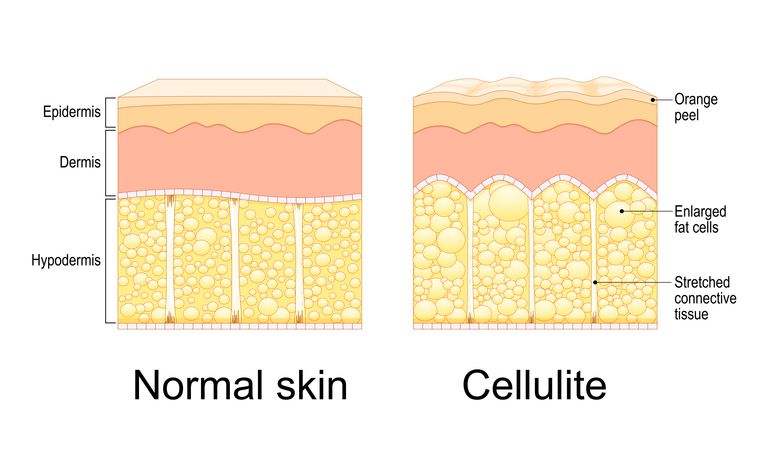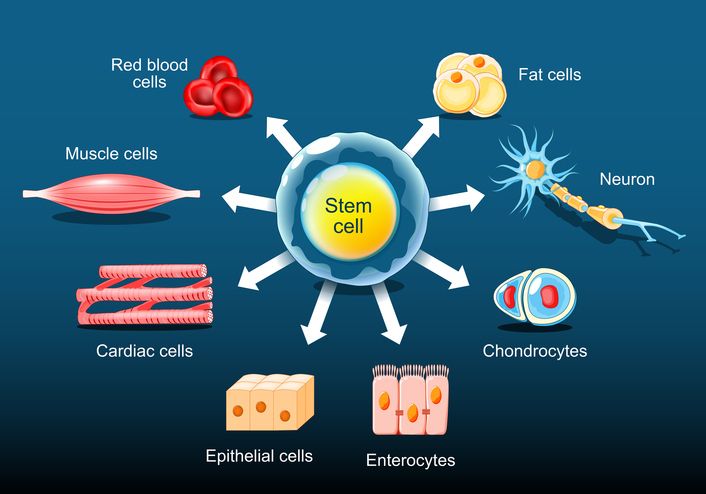
Author: Natalie Ng|Updated: 23 May 2025
Minoxidil has been a go-to for treating hair loss, but it’s not the only way to support healthy hair growth. Whether you’re dealing with female pattern hair loss, male pattern baldness, or thinning hair in general, there are natural alternatives that can help. Options like rosemary oil, natural DHT blockers, peptides, microneedling, and laser therapy work in different ways to help stimulate hair follicles and encourage new hair growth. These alternatives to minoxidil can also help improve your scalp condition, boost blood circulation, and support stronger, thicker hair. If you’re curious about what else can help with hair regrowth and how these methods compare to minoxidil, keep reading.

Minoxidil Alternative 1: Rosemary Oil for Hair Regrowth
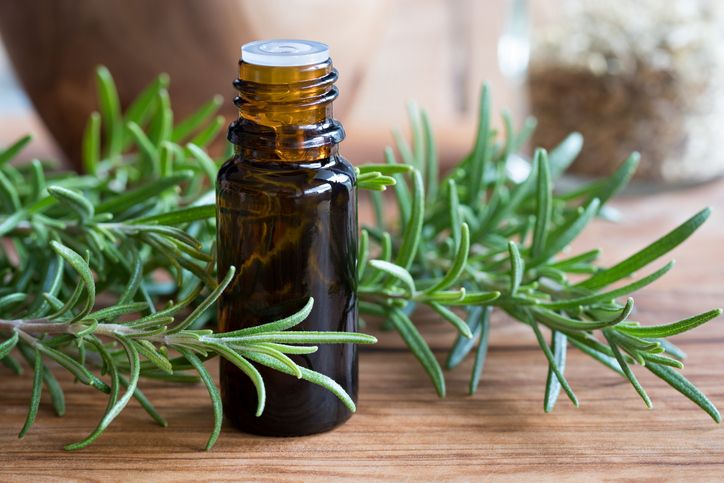
Rosemary oil benefits for hair growth
Rosemary oil is a natural alternative to minoxidil that may help stimulate hair follicles, improve blood flow in the scalp, and support healthy hair growth. Research shows rosemary oil can match the effectiveness of minoxidil for patients dealing with androgenetic alopecia, making it a promising option for hair loss treatment and hair health.
Using rosemary oil with essential oils for hair thinning
Blending rosemary oil with essential oils like peppermint, lavender, and thyme may improve scalp condition and promote a healthy hair growth cycle. These essential oils are known for supporting blood circulation, calming scalp irritation, and improving hair density.
How to use rosemary oil for hair regrowth
Mix 10 to 15 drops of rosemary oil with 2 tablespoons of a carrier oil, such as coconut or jojoba oil. Gently massage the mixture into the scalp 2 to 3 times per week using small, circular motions. This may help increase blood flow to the hair follicles and promote thicker, stronger hair.
Leave the oil blend on your scalp for at least 30 minutes before washing it off. You can also leave it on overnight using a shower cap. Regular use of rosemary oil can be a helpful step in treating hair loss and supporting new hair growth.

Minoxidil Alternative 2: Microneedling Therapy for Hair Regrowth
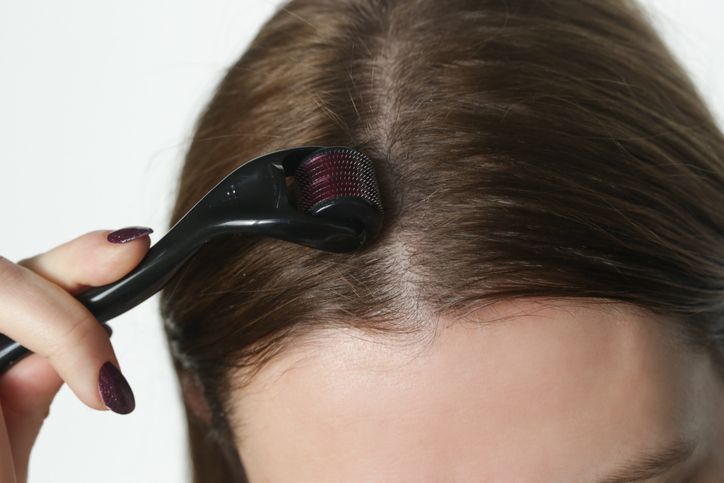
How microneedling supports hair regrowth
Microneedling is a popular natural alternative to minoxidil that may help stimulate hair follicles and improve scalp condition. It works by creating small punctures in the scalp using a device with fine needles, usually between 0.5 and 1.5 mm. These tiny channels trigger the body’s natural healing response, which may lead to collagen production, increased blood flow, and stronger hair follicles.
This process may also help improve the absorption of topical treatments, which can further support a healthy hair growth cycle. Microneedling is often used for treating hair loss linked to androgenetic alopecia and can help prevent further hair shedding in both male and female pattern hair loss.
Professional microneedling treatments for hair loss
For best results, microneedling is usually performed by a dermatologist or hair specialist every 4 to 6 weeks. They use a medical-grade device and apply the tool in multiple directions to create thousands of small punctures across the scalp. This method ensures the correct needle depth and helps stimulate hair regrowth safely and effectively.
At-home microneedling for healthy hair growth
Between professional treatments, some people use at-home microneedling devices (0.25 to 0.5 mm) to maintain results. If using a dermaroller at home, it’s important to sterilize the tool before each use and replace it every 6 to 8 weeks to avoid irritation or infection.
Regular microneedling may help promote blood circulation, support hair thickness, and reduce further hair loss.
Read More
Book Now to Experience
F8 Hair Regrowth Treatment
1 Minute Self-Registration
Date should not be before minimal date

Minoxidil Alternative 3: DHT Blockers and Finasteride for Hair Loss

Why DHT blockers help with hair regrowth
DHT, or dihydrotestosterone, is a key factor in male pattern baldness and androgenetic alopecia. High levels of DHT can shrink hair follicles, leading to hair thinning and hair loss. DHT blockers like finasteride are a popular alternative to minoxidil because they help lower DHT levels in the scalp, which may reduce hair shedding and encourage hair regrowth.
Finasteride works by blocking the enzyme that converts testosterone into DHT, potentially reducing DHT levels in the scalp by up to 70%. Many patients see results within 3 to 6 months of daily use, especially in cases of male pattern baldness.
Natural DHT blockers for hair growth
For those seeking natural alternatives to minoxidil and prescription treatments, several plant-based options are worth exploring. Saw palmetto is the most studied natural DHT blocker, while pumpkin seed oil, green coffee oil, and green tea extract have also shown potential benefits for hair health. These natural options are often used by patients with female pattern hair loss or those looking to support healthy hair growth without prescription medication.
Using DHT blockers safely
DHT blockers should be used regularly, as their effects depend on keeping DHT levels low. While prescription finasteride may offer faster results, natural DHT blockers can still help prevent further hair loss and support hair density when used consistently. For those considering finasteride, it’s important to speak with a healthcare professional to discuss the right dosage and monitor for potential side effects, as it is also used for treating enlarged prostate and benign prostatic hyperplasia.

Minoxidil Alternative 4: Peptide-Based Solutions for Hair Regrowth

Peptides and their role in hair health
Peptide-based treatments are a natural alternative to minoxidil that may help support hair growth at a cellular level. Peptides are small chains of amino acids that can act as messengers in the body, encouraging certain processes like collagen production, blood vessel growth, and improved blood flow to hair follicles. In the context of hair growth, peptides may help stimulate dormant hair follicles and support a healthier scalp condition.
Types of peptides used for hair regrowth
Copper peptides, such as GHK-Cu, are some of the most researched peptides for hair loss treatments. They may help promote blood circulation, reduce inflammation, and improve the delivery of essential nutrients to hair follicles. Biomimetic peptides, designed to mimic natural processes in the body, are also used to target specific areas of hair thinning and stimulate new hair growth.
Using peptide solutions for hair growth
Peptide-based products are typically available as serums or topical treatments. They are often applied directly to the scalp, ideally after microneedling or dermarolling, to help increase absorption and support cellular regeneration in the hair follicles. Many users report seeing changes such as increased hair density, improved hair thickness, and reduced hair shedding after 2 to 3 months of regular use.
Peptides are a newer option for treating hair loss and may be helpful for patients suffering from androgenetic alopecia, alopecia areata, or hair thinning from other causes.
Book Now to Experience
F8 Hair Regrowth Treatment
1 Minute Self-Registration
Date should not be before minimal date

Minoxidil Alternative 5: Laser Light Therapy for Hair Regrowth
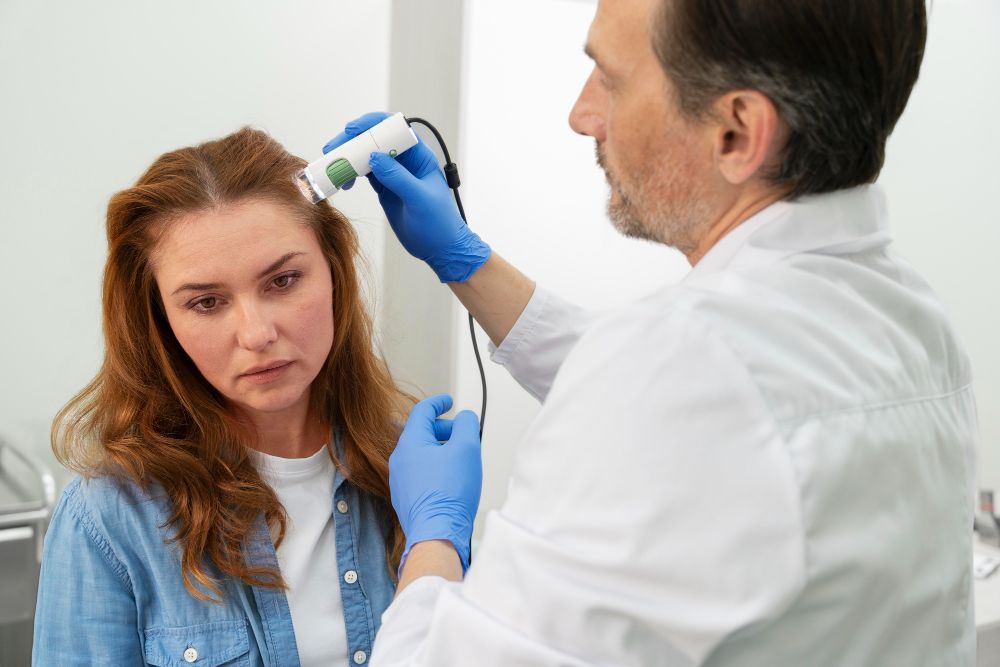
How laser therapy supports hair growth
Laser light therapy is a natural alternative to minoxidil that may help promote hair growth and improve scalp condition. The treatment uses red or near-infrared light, usually between 630 and 670 nanometers, to stimulate blood circulation in the scalp. This increased blood flow can help deliver essential nutrients to hair follicles, supporting hair regrowth and helping reduce further hair loss.
Types of laser light therapy devices for hair loss
There are two main types of laser therapy devices: handheld combs and helmet-style caps. Handheld combs are moved across the scalp manually for 10 to 15 minutes per session, while helmet caps are worn hands-free for 20 to 30 minutes. Both options deliver targeted light therapy directly to the scalp and may help improve hair thickness, hair density, and the overall health of hair follicles.
Using laser therapy devices safely and effectively
Most users apply laser light therapy three times per week, but results can vary depending on the device and frequency of use. Many people report visible changes within 12 to 16 weeks, although regular use is important for best results.
Before starting laser light therapy, it’s a good idea to consult a healthcare professional to ensure it’s a safe option for your specific hair loss condition, whether that’s male pattern baldness, female pattern hair loss, or androgenetic alopecia.

Minoxidil Alternative 6: Nutrient-Rich Diet for Hair Health

Importance of a balanced diet in hair growth
A well-balanced diet plays a crucial role in maintaining healthy hair and can serve as a natural alternative to minoxidil. Essential nutrients such as proteins, vitamins, and minerals support the hair growth cycle and strengthen hair follicles. Deficiencies in nutrients like iron, zinc, and biotin have been linked to hair thinning and hair loss.
Key nutrients and their food sources
• Protein: Hair is made of keratin, a protein that supports strength and structure. Good sources include eggs, chicken, turkey, tofu, and lentils.
• Iron: Iron supports red blood cells in carrying oxygen to hair follicles. You can get iron from red meat, liver, oysters, spinach, and pumpkin seeds.
• Zinc: Zinc is important for hair tissue growth and repair. Foods like beef, chickpeas, cashews, and mushrooms are good sources of zinc.
• Biotin (Vitamin B7): Biotin helps with keratin production. Foods like eggs, almonds, avocados, and sweet potatoes are rich in biotin.
• Omega-3 Fatty Acids: Omega-3s nourish hair follicles and support scalp health. Good sources are salmon, mackerel, sardines, chia seeds, and walnuts.
• Vitamins A and C: Vitamin A helps produce sebum to keep the scalp moisturized, while Vitamin C supports collagen production. Carrots, sweet potatoes, bell peppers, and citrus fruits are rich in these vitamins.
• Vitamin D: Vitamin D plays a role in hair follicle cycling. You can get it from fatty fish, eggs, mushrooms, and fortified foods.
• Vitamin E: Vitamin E helps protect cells from damage and supports scalp health. Almonds, sunflower seeds, spinach, and avocados are good sources.
• Selenium: Selenium helps prevent oxidative stress in the scalp. Brazil nuts, tuna, and eggs provide this important nutrient.
Incorporating hair-friendly foods into your diet
Adding these nutrient-rich foods to your meals can support hair health and promote hair growth naturally. For example, try a spinach and egg breakfast, salmon with roasted sweet potatoes for dinner, and snack on almonds or sunflower seeds. A balanced diet can help nourish hair follicles and reduce the need for other hair loss treatments.
Book Now to Experience
F8 Hair Regrowth Treatment
1 Minute Self-Registration
Date should not be before minimal date

Common Types and Causes of Hair Loss
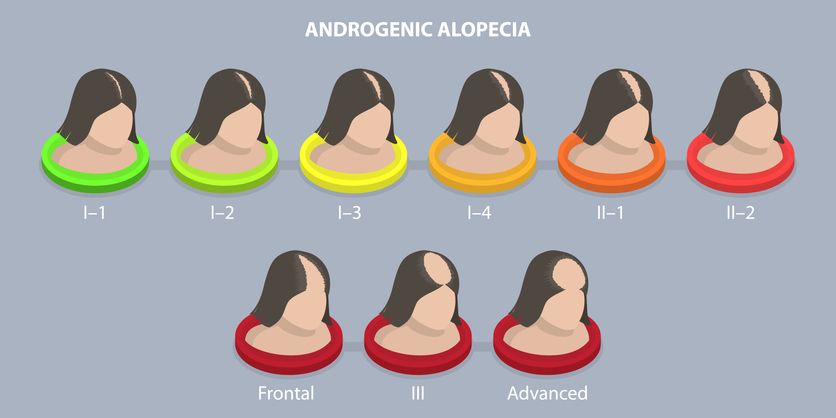
Androgenetic alopecia (pattern hair loss)
Androgenetic alopecia is the most common cause of hair loss, often known as male pattern baldness or female pattern hair loss. It’s linked to a sensitivity to DHT, a hormone that can shrink hair follicles over time and shorten the hair growth cycle. In men, this type of hair loss usually starts with a receding hairline or thinning at the crown. In women, it often shows up as overall thinning, especially at the top of the scalp.
Telogen effluvium (stress-related hair shedding)
Telogen effluvium happens when a large number of hair follicles enter the resting phase (telogen) too early, leading to noticeable shedding. It’s often triggered by stress, illness, surgery, or hormonal changes like childbirth. The hair usually starts growing back after a few months once the cause is addressed.
Alopecia areata (patchy hair loss)
Alopecia areata is an autoimmune condition where the immune system attacks the hair follicles, causing sudden, patchy hair loss. The hair may regrow on its own, but sometimes treatment is needed to help stimulate regrowth.
Anagen effluvium (treatment-related hair loss)
Anagen effluvium happens during the growth phase of the hair cycle and is often caused by treatments like chemotherapy or radiation. The hair usually grows back after treatment stops, though the texture or color may change.
Traction alopecia (hair loss from tension)
Traction alopecia is caused by tight hairstyles, like braids, ponytails, or extensions, that put too much pressure on the hair follicles. Over time, this tension can damage the follicles and lead to hair thinning or bald patches. Changing hairstyles early can help prevent permanent damage.
Hair loss from nutritional deficiencies
Lack of nutrients like iron, zinc, vitamin D, and biotin can contribute to hair thinning and shedding. Eating a balanced diet with enough of these nutrients can help support healthy hair growth.
Hormonal changes and medical conditions
Hormonal imbalances, such as thyroid disorders or PCOS, can disrupt the hair growth cycle and lead to hair loss. Certain medical conditions like lupus or diabetes, and some medications, can also trigger hair thinning or shedding.

Hair Growth Cycle and Its Impact on Hair Loss
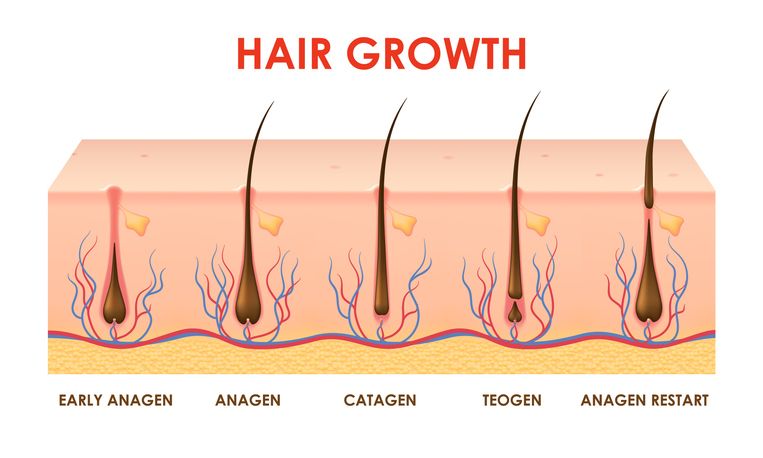
How the hair growth cycle works
Hair grows in a continuous cycle, and each stage plays a different role in maintaining hair density and overall hair health. The cycle has three main phases:
• Anagen phase (growth phase): This is when hair follicles actively produce new hair. The anagen phase can last between 2 to 7 years, and most of the hair on your scalp is in this phase at any time. A longer anagen phase means longer hair growth.
• Catagen phase (transition phase): This is a short stage lasting 2 to 3 weeks. Hair growth stops, and the hair follicle begins to shrink.
• Telogen phase (resting phase): This phase lasts around 3 months. Hair does not grow, but it stays in the follicle before eventually shedding.
When the hair growth cycle is disrupted, hair can enter the telogen phase too early. This leads to more hair shedding, which is common in conditions like androgenetic alopecia, male pattern baldness, and female pattern hair loss.
Why the hair growth cycle is important in treating hair loss
Understanding the hair growth cycle is key for managing hair loss and promoting hair regrowth. Treatments and natural alternatives to minoxidil often focus on keeping hair in the anagen phase for as long as possible. This helps promote thicker, stronger hair growth and supports hair density.
Supporting healthy blood flow, providing essential nutrients, and reducing scalp inflammation all play a role in keeping the hair growth cycle balanced. When the cycle is working properly, it becomes easier to prevent further hair loss and stimulate new hair growth.

F8 Hair Regrowth Treatment: A Non-Invasive Option to Boost Hair Growth
For those exploring minoxidil alternatives, the F8 Hair Regrowth Treatment offers a natural and non-invasive solution that can support healthy hair growth and enhance the effects of other hair loss treatments. Clinical trials have evaluated the F8 treatment for its effectiveness in stimulating hair growth and promoting hair growth. The F8 treatment uses low-level laser energy combined with a specialized hair growth serum to stimulate the scalp, increase blood circulation, and encourage hair regrowth, which is considered as an effective treatment for many users with long-term benefits.
How F8 Hair Regrowth Treatment Works
The treatment starts with a detailed scalp and hair follicle analysis using magnification, helping identify areas of thinning, hair loss, or poor scalp condition. A professional therapist then uses the F8 device to deliver gentle, low-energy laser beams across the scalp. This step helps activate dormant hair follicles, strengthen the hair papilla, and improve the surrounding capillaries, ensuring that nutrients reach the follicles more effectively.
Once the scalp has been stimulated, a hair growth serum is applied to hydrate the scalp, control excess sebum, and create a healthier environment for new hair growth. The laser energy improves serum absorption, helping the treatment work more effectively.
Benefits of F8 Hair Regrowth Treatment
The F8 treatment is non-invasive, safe for both men and women, and does not require any downtime. It is suitable for those with androgenetic alopecia, male pattern baldness, female pattern hair loss, or general hair thinning. By supporting scalp health, balancing sebum, and improving blood flow, F8 may help prevent further hair loss and promote thicker, stronger hair.
When combined with other natural treatments, such as DHT blockers, peptide solutions, or essential oils, F8 can help enhance the overall effectiveness of a hair regrowth plan.
If you’re looking for a non-surgical hair loss treatment to support healthy hair growth, the F8 Hair Regrowth Treatment is worth exploring.
Book F8 today to start your journey toward healthier, fuller hair!
New Beauty's F8 Hair Regrowth TreatmentBook Now to Experience
F8 Hair Regrowth Treatment
1 Minute Self-Registration
Date should not be before minimal date
FAQ
1. Can I combine minoxidil alternatives with other hair loss treatments?
Yes, combining minoxidil alternatives like rosemary oil, DHT blockers, microneedling, or laser therapy with other hair loss treatments can improve results. Some people choose to use alternatives alongside topical minoxidil or oral minoxidil to support different aspects of hair regrowth, like improving blood circulation or blocking DHT. However, it’s important to consult a healthcare professional to avoid potential interactions, especially if using prescription treatments for hair loss or other medications for conditions like high blood pressure or benign prostatic hyperplasia.
2. How long does it take to see results from natural alternatives to minoxidil?
Natural treatments for hair loss, such as essential oils, peptides, or scalp treatments, often take longer to show visible results compared to minoxidil. Most people start to see changes in hair density or thickness after 3 to 6 months of regular use, depending on the method and the severity of hair loss. For example, low-level laser therapy or peptide-based solutions may show early improvements within a few months, while natural supplements like pumpkin seed oil or green coffee oil may take longer to affect hair density.
3. Can minoxidil alternatives help with alopecia areata?
Some minoxidil alternatives may support hair regrowth in cases of alopecia areata, but results vary. Treatments like microneedling, essential oils such as rosemary or peppermint oil, and natural DHT blockers may help stimulate hair follicles and improve scalp condition. However, since alopecia areata is an autoimmune condition, it’s important to work with a healthcare professional or dermatologist to explore treatment options and manage expectations.
4. Are there side effects with natural treatments for hair loss?
While natural remedies for hair thinning and hair regrowth are generally safe, some people may experience side effects. Essential oils like peppermint or rosemary oil can cause scalp irritation or allergic reactions if not diluted properly. Natural supplements such as saw palmetto or pumpkin seed oil may cause mild digestive issues in some cases. It's always a good idea to do a patch test when trying a new topical solution or consult a healthcare professional if you have pre-existing medical conditions.
5. How does blood circulation affect hair regrowth?
Blood circulation plays a key role in delivering oxygen, nutrients, and essential vitamins to the hair follicles. Poor circulation can limit nutrient delivery, weakening the hair papilla and slowing down the hair growth cycle. Treatments like microneedling, laser therapy, and scalp massage help increase blood flow to the scalp, which may promote hair density, stimulate hair regrowth, and prevent further hair loss. Improving blood flow is an important part of many natural treatments for pattern hair loss and androgenetic alopecia.
Recommended Articles
COPYRIGHT© NEW BEAUTY MANAGEMENT LIMITED 2025. ALL RIGHT RESERVED.

